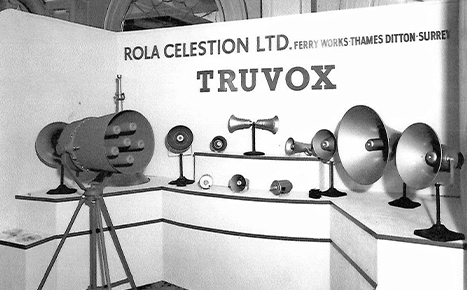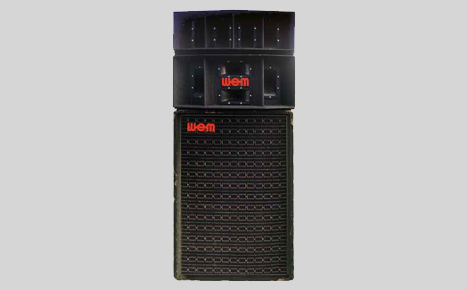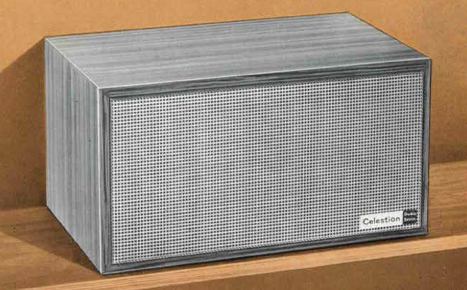THE Celestion Brand Continues to Grow
In the November 1953 edition of Wireless World, it was announced that the sale, distribution and service of Rola and Celestion loudspeakers, along with Truvox public address loudspeakers, would ‘henceforth be undertaken by Rola Celestion, Ltd.’ and not, as previously, by Truvox.
Although trading as Rola Celestion, the company continued to manufacture products branded as Rola, Celestion and Truvox. However, by the late 1950s, it was Celestion that prevailed as the dominant brand name.
Truvox immediately brought a greater range of public address loudspeakers into the combined range, and as the dust of the takeover settled, Rola Celestion began manufacturing this new wave of public address components: pressure drive units, re-entrant and exponential horns, alongside the mains-powered and permanent-magnet speakers and transformers for which the brands had been noted throughout the 1930s and 40s.
Around this time, Jelinek the hairbrush manufacturer moved out of Ferry Works, and Rola Celestion wasted no time in occupying the whole building, which gave the company the space required to manufacture the additional products in its newly expanded portfolio. The arrival of the stereophonic long-playing record by the end of the ‘50s would have a significant impact, as enthusiasts of high-fidelity sound were keen to build and improve their own equipment. To take advantage of this, Celestion produced the G44/1300, which enabled an existing radio gramophone to be modified to incorporate two 12in G44 speakers (a variant of Rola’s popular and versatile G12 format moving coil speaker) and HF1300 high frequency units, which would soon take on a starring role when the company began building its own complete HiFi speakers.

Vox, Marshall and the Evolution of the G12
Invented in 1936 as a radio speaker, the general purpose ‘G12’ was used in many applications. Several versions including the G44, CT3757 and B024—all built with alnico magnets and in colours such as silver, ‘poly grey’ and ‘hammertone oyster’—were manufactured during the late 1950s as the speaker began to be deployed in the guitar amplifiers of the time. But as amplified music got louder, more robust speakers were needed to keep up with the demand for increased power.
In 1959 Celestion Chief Engineer Les Ward created a specially toughened version of the G12 to withstand more heat and mechanical vibration. This speaker evolved into the T530 Alnico Blue: the world’s first speaker designed specifically for use with guitar amplifiers.
Installed in Vox AC15 and AC30 amplifiers, the speaker was instantly recognisable with its iconic azure blue livery. Soon after, the toughened G12 was also adopted by Marshall Amplification, given a more traditional silver paint job and, as T652, used in legendary Marshall cabinets including the 1962 ‘Bluesbreaker’ combo amp.
And so, this landmark loudspeaker and its many subsequent evolutions have gone on to voice many of the most memorable guitar riffs and solos of all time, and Celestion guitar speakers continue to be the first choice of leading players and amp manufacturers around the world.

Pioneering Modern PA
Later in the ‘60s, Celestion played an important role in the development of modern PA technology, supplying cone drivers and HF horn-loaded pressure units to pioneering British PA brand WEM, responsible for a tectonic shift in festival sound reproduction with its ‘Wall of Sound’ PA providing 1000W power capacity for promoters Harold and Barbara Pendleton at the 1967 Windsor Jazz & Blues Festival. Barbara later recalled that this sound system ‘hit the headlines in the local paper and frightened all the residents’.
The system was later upgraded further to 2500W for The Who at the 1969 Isle of Wight Festival, using up to 16 WEM slave columns at each side of the stage. It was announced at the time as the loudest sound system in the world, and the set carried warning signs for people to keep at least 15ft away!
Just a year later, it was the Isle of Wight Festival sound system that was the first to feature WEM’s unique parabolic dishes for outdoor venues, using 10in Celestion speakers firing towards the dish, which in turn reflected back the mid-frequency (MF) and HF signals, sending them over a remarkably long distance.

HiFi Comes of Age
Even with its rich pedigree in loudspeaker development for pre-war ‘home entertainment systems’—the gramophones and radiograms on which the company had made its name— Celestion was aware that it had yet to introduce a product that could truly keep pace with the modern, 1960s idea of HiFi. With eyes firmly on that prize, the loudspeaker designers at Thames Ditton worked on creating the first of many notable Celestion HiFi loudspeaker designs.
The initial result was the Ditton 10, launched in 1964 and named for its birthplace and the modest power input it was capable of accepting (it was rated at 10W RMS). If not quite revolutionary, this speaker was certainly instrumental in defining what HiFi could be: no longer just a hobby for affluent devotees, but simply great-sounding music reproduction, now affordable for the masses.
As the range expanded in the coming years, Celestion had carved itself a significant slice of the HiFi market. With this rapid success came more growing pains, and by the close of the decade Celestion had finally, unquestionably, outgrown its factory in Thames Ditton and it was time to leave. Now established as a marque in its own right, however, the name Ditton was set to live on.
And so, a new manufacturing site was found some 100 miles north east of London at Foxhall Road in Ipswich and in 1969, a newly created entity was known as Celestion Industries, plc., was listed on the London Stock Exchange.




